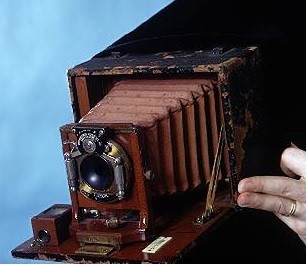 French physicist Nicéphore Niépce is considered one of the inventors of photography, having immortalized views from his window by sensitizing Judean bitumen on tin. Later his compatriot Louis Daguerre invents the first reliable photography process which will be presented to the Academy of Sciences in 1839. This 19th century invention will revolutionize the relationship to the image and announce the advent of a new civilisation:that of the media. Until then, preserving the memory of an event, a scene or a face was the sole skill of painters or sculptors. Photography, which has become portable and easy to use, will become accessible to as many people as possible.
French physicist Nicéphore Niépce is considered one of the inventors of photography, having immortalized views from his window by sensitizing Judean bitumen on tin. Later his compatriot Louis Daguerre invents the first reliable photography process which will be presented to the Academy of Sciences in 1839. This 19th century invention will revolutionize the relationship to the image and announce the advent of a new civilisation:that of the media. Until then, preserving the memory of an event, a scene or a face was the sole skill of painters or sculptors. Photography, which has become portable and easy to use, will become accessible to as many people as possible.
Nicéphore Niépce and the invention of photography
Among the many discoveries and inventions of the Arab world around the tenth century, it is worth noting that of the darkroom, an indispensable element for the invention of photography . the latter stems from a long technical process that began in the 18th century with research on the sensitivity to light of silver salts. Imprints of objects on sensitized paper had been obtained but without lasting fixation of the images. Despite Leonardo da Vinci's early idea to fix the projected image in this dark room, it was not until 1826 that the Frenchman Nicéphore Niépce concretized it thanks to a pewter plate covered with a bitumen solution of Judea and lavender essence, which he exposes for eight hours.
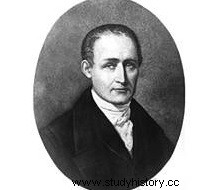 Nicéphore Niépce (1765-1833) was a French physicist from Chalon-sur-Saône. In 1813, he became interested in the technique of lithography, seeking to obtain drawings by the action of light. He then focused on two tracks:the reproduction of the engravings made translucent by a varnish and the fixing of the images obtained using a camera obscura ("darkroom") portable. This same year 1816, in a letter of May, he evokes an image with silver salts, obtained with inverted values; but he seeks a direct positive process and this "negative" does not satisfy him.
Nicéphore Niépce (1765-1833) was a French physicist from Chalon-sur-Saône. In 1813, he became interested in the technique of lithography, seeking to obtain drawings by the action of light. He then focused on two tracks:the reproduction of the engravings made translucent by a varnish and the fixing of the images obtained using a camera obscura ("darkroom") portable. This same year 1816, in a letter of May, he evokes an image with silver salts, obtained with inverted values; but he seeks a direct positive process and this "negative" does not satisfy him.
Nicéphore Niépce then became interested in the photosensitivity of many materials (silver chloride, guaiac resin, phosphorus, oil) on supports as diverse as paper, glass , metal or stone, placed in the darkroom. From 1819, he tried bitumen of Judea (a product used by engravers for etching), first on a glass plate, then on a polished pewter plate. It is thanks to this last process that he obtained, in 1826-1827, several views taken from the window of his home in Gras, in Saint-Loup-de-Varennes. One of them, taken in 1827 - which would have required about three days to pose - is considered to be the first photograph known to date. Nicéphore Niépce refers to his invention as heliography (“writing by the sun”).
The success of the daguerreotype
The invention was quickly perfected by Jacques Daguerre, another photography pioneer and associate of Niépce, whose first daguerreotypes were made in 1837. His process consisted of "exposing" a silvered copper plate sensitive to iodine vapour, then to "develop" its image with mercury vapour. In 1839, Daguerre fixed a direct positive test and the process was presented in 1839 to the Academy of Sciences by the scientist and deputy François d'Arago and aroused enthusiasm. The rights of the daguerreotype having become free, the invention spread in France and throughout the world. Quickly, according to a contemporary, “opticians’ shops were crowded with amateurs longing for a daguerreotype; you could see them everywhere pointing at the monuments. Everyone wanted to copy the view that was offered from their window .
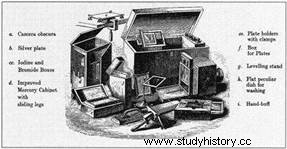 The success of the daguerreotype overshadowed other processes. Talbot nevertheless continued his research and developed the calotype, allowing him to make several positive prints. Photography thus shifted into the era of the multiple. The daguerreotype only allowed the creation of unique copies. The decline of daguerreotypes began in the 1850s with the improvement of sensitive surfaces through the use of wet collodion, then gelatin silver halide. Lenses became more and more efficient, while color photography experienced its first technical developments with two French inventors, Louis Ducros du Hauron and Charles Cros.
The success of the daguerreotype overshadowed other processes. Talbot nevertheless continued his research and developed the calotype, allowing him to make several positive prints. Photography thus shifted into the era of the multiple. The daguerreotype only allowed the creation of unique copies. The decline of daguerreotypes began in the 1850s with the improvement of sensitive surfaces through the use of wet collodion, then gelatin silver halide. Lenses became more and more efficient, while color photography experienced its first technical developments with two French inventors, Louis Ducros du Hauron and Charles Cros.
In 1841, the British William Henry Fox Talbot invented the positive negative, which allowed the multiplication of prints. These two discoveries are the culmination of optical research begun in the Italian Renaissance (camera obscura, or "dark room") and chemical studies on the sensitivity to light of silver salts. A camera consists of a dark room and a lens whose operation is inspired by that of the human eye:the diaphragm is adjusted according to the external lighting. A photosensitive film is introduced into the device, from which the photographer obtains the negatives (the values are reversed with respect to reality) which will then be printed on paper, in color or in black and white.
The fashion for family portraits
Despite the progress made, the use of photography is restricted by the exposure time of several tens of minutes. It is the family portraits, taken in the studio, that contribute to the success of photography. Itinerant photographers allow everyone to proudly display their portrait on the fireplace, giving birth to a new profession. The technical process is indeed complex and tedious:you have to install the camera, adjust it, control the exposure and fix the glass plate serving as a negative, then fix the photographic image.
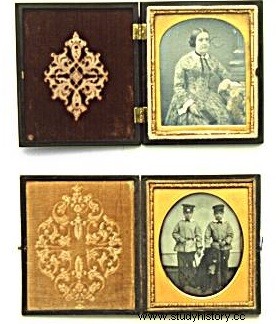 Despite everything, taking up this aristocratic tradition of the family portrait, the booming industrial and commercial bourgeoisie was very demanding. In 1841, the first portrait studio in Europe opened in London. Scrapbooks emerged, telling the family story. In the American countryside, itinerant photographers offered farmers the opportunity to hang the portraits of the masters of the household on the wall of their main room. From the 1850s, "visiting card" photographs enjoyed the favor of the greats of the world, who exchanged them during social relations, while most of the large workshops, such as that of Nadar or Disdéri in Paris, launched in the celebrity portrait business.
Despite everything, taking up this aristocratic tradition of the family portrait, the booming industrial and commercial bourgeoisie was very demanding. In 1841, the first portrait studio in Europe opened in London. Scrapbooks emerged, telling the family story. In the American countryside, itinerant photographers offered farmers the opportunity to hang the portraits of the masters of the household on the wall of their main room. From the 1850s, "visiting card" photographs enjoyed the favor of the greats of the world, who exchanged them during social relations, while most of the large workshops, such as that of Nadar or Disdéri in Paris, launched in the celebrity portrait business.
A new profession:photographer
A new profession, that of photographer, was emerging. It was based on a complex technical process that only professionals could master. He had to prepare his camera, adjust it, expose and develop, fix the glass plate serving as a negative, then print and fix the positive print. The first generation of photographers appeared between 1860 and 1880, and it was not until the 1890s that amateur photography developed.
If the portrait remains the main field of application of the daguerreotype, then of the calotype, it cannot be reduced to this. Architectural and landscape views broadened the range of topics covered. Likewise, a scientific use spread. In a few decades, photography acquired a certain technical maturity. It gradually supplanted all the reproduction techniques hitherto used and gradually acquired the status of art. The transition to popular photography was later and owed much to the American industrialist George Eastman.
Eastman Kodak, photography for everyone
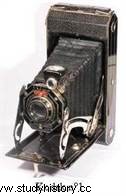 At the end of the 19th century, this American industrialist democratized the process with the development of photography silver. A celluloid film replaces the glass plate, allowing multiple shots to be taken. As early as 1884, he perfected flexible sensitive surfaces and Celluloid film allowing several images to be stored in the camera magazine. The film, associated with a film advance system, had to supplant the glass plate because it was easier to handle. But despite these improvements, the commercial failure was obvious and he had to develop a new category of customers.
At the end of the 19th century, this American industrialist democratized the process with the development of photography silver. A celluloid film replaces the glass plate, allowing multiple shots to be taken. As early as 1884, he perfected flexible sensitive surfaces and Celluloid film allowing several images to be stored in the camera magazine. The film, associated with a film advance system, had to supplant the glass plate because it was easier to handle. But despite these improvements, the commercial failure was obvious and he had to develop a new category of customers.
For this, Eastman transformed his product into an easy-to-handle device and in 1888 launched the Kodak, a portable camera equipped with film. When a customer had taken their 100 photos, they returned the entire device to the factory. The film was processed there, the camera reloaded and then sent back with developed photographs, all at an affordable price. It was an integrated system based on ease of use, as its slogan emphasized:“Push the button, we will do the rest. Amateur photography was born.
Photography has since been used in multiple fields, from science to media and also in art. Many photographers have left their mark on history, from Nadar to Doisneau, passing by great reporters such as Capa and Cartier-Bresson, and all those whose pictures constitute a social memory:Brassai', Boubat... After 1930, the photography, which has become an art in its own right, explores its own specificities, notably with the works of Strand, Weston, Moholy-Nagy, Man Ray, Rodchenko.
Innovations in the field of photography in the 20th century
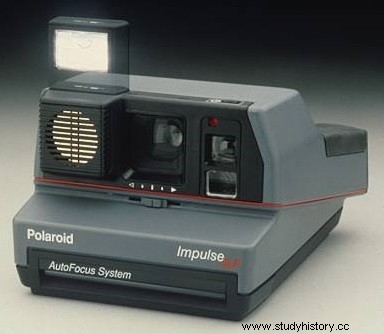 - 1913:German Oskar Barnack builds the Leica.
- 1913:German Oskar Barnack builds the Leica.
- 1930:German Johann Ostermeyer files a patent for his flash bulb.
- 1948:the instant-develop Polaroid is developed.
- 1990:first commercialization of the consumer digital camera.
To go further
- Photography:History and counter-history, by François Brunet. PUF, 2017.
- History of photography, by Pierre-Jean Amar. What Do I Know, 2020.
- A History of Photography for All, by Ian Jeffreys. Hazan, 2021.
And also
- The French photography museum (Bièvres, 91).
